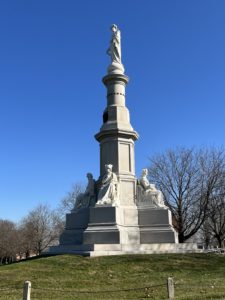
Abraham Lincoln famously gave his Gettysburg Address on November 19, 1863, at what is now the National Cemetery. A commemoration is held every year on that date with prominent speakers, reenactors, and musicians. For Lincoln scholars and aficionados, the days leading up to the 19th are the annual Lincoln Forum. I’ve been privileged enough to attend the Forum every year since 2014, including this past week.
I arrived early morning on November 16th and joined colleagues at the Lincoln Diner in downtown Gettysburg for a robust breakfast. About twenty of us then headed out to the National Cemetery for a fascinating private tour by my colleague Scott Schroeder exploring the mysteries of who took the half dozen extant photos of the dedication. And that was before the Forum even began!
The Lincoln Forum officially begins with happy hour and dinner on the 16th. This year featured NPR’s Morning Edition host, Steve Inskeep, whose most recent book, Differ We Must, explored how Lincoln deftly interacted with those people who disagreed with him. I was lucky enough to have a short conversation with him and get a photo.

The first full day brought an amazing slate of speakers, such as Ron White, Craig Symonds, Kate Masur, and Forum Vice Chair Jonathan White. There was also a panel discussion including the likes of Ed Achorn, Joe Fornieri, Ron White, and Harold Holzer, moderated by Erin Carlson Mast. Not to be outdone, there was after-dinner entertainment from Jay Ungar and Molly Mason, the musical team that created the soundtrack to Ken Burns’s Civil War miniseries.
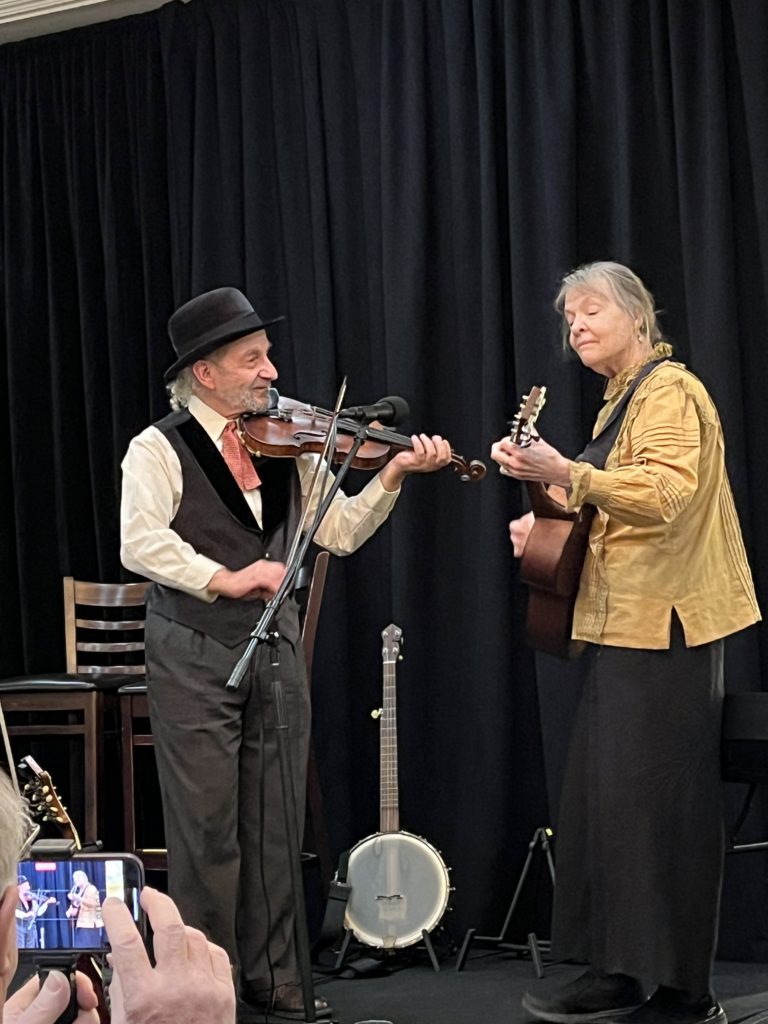
The final day was just as interesting, with Achorn returning to discuss his book about the 1860 Chicago Republican convention, which was given the Harold Holzer Lincoln Forum Book Prize. Then there was Edna Greene Medford in conversation with Matthew Norman, co-author of an amazing compilation of African American voices on Lincoln, followed by a panel discussion featuring Allen Guelzo, Michelle Krowl, Dana Shoaf, and Melissa Winn, moderated by Jonathan White. It didn’t end there – the afternoon featured seven breakout sessions and a tour for first timers.
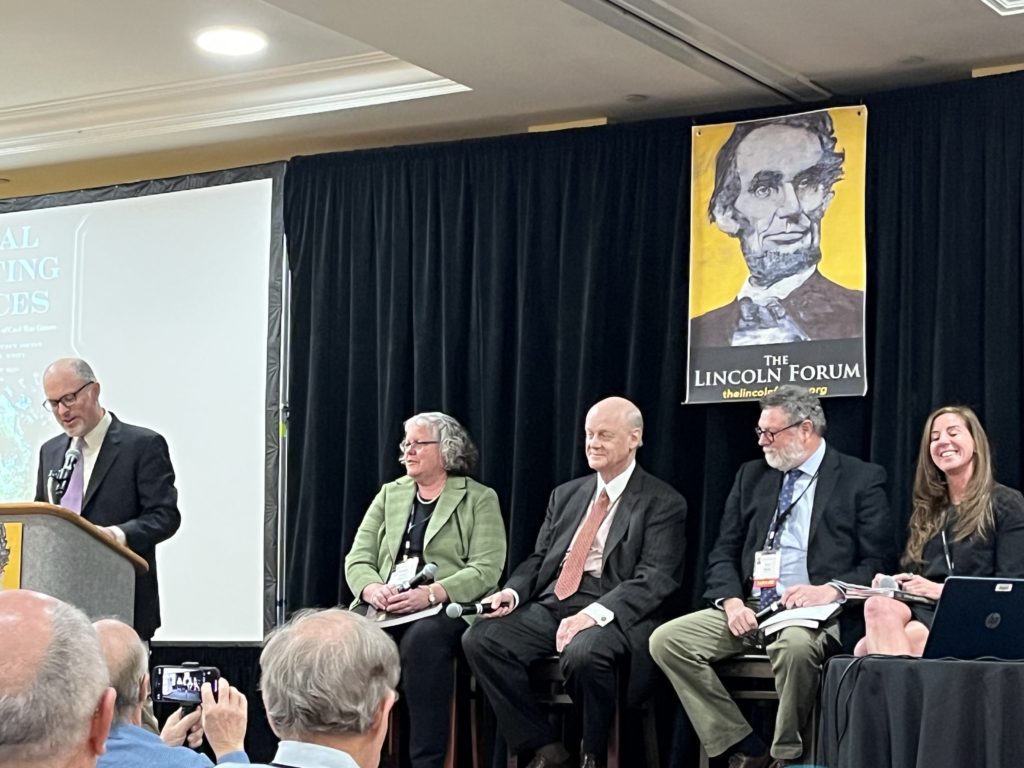
The Lincoln Forum wrapped up its final night with its usual fantastic dinner. But the highlights were a reading of the Gettysburg Address by actor Graham Sibley, that everyone in attendance agreed was the finest rendition of the famous address any of us had ever heard. Then Harold Holzer led a session in conversation with the incomparable Doris Kearns Goodwin and her film production partner, Beth Laski. It was their film for the History Channel that starred Sibley, and it’s easy to see why it was so successful.
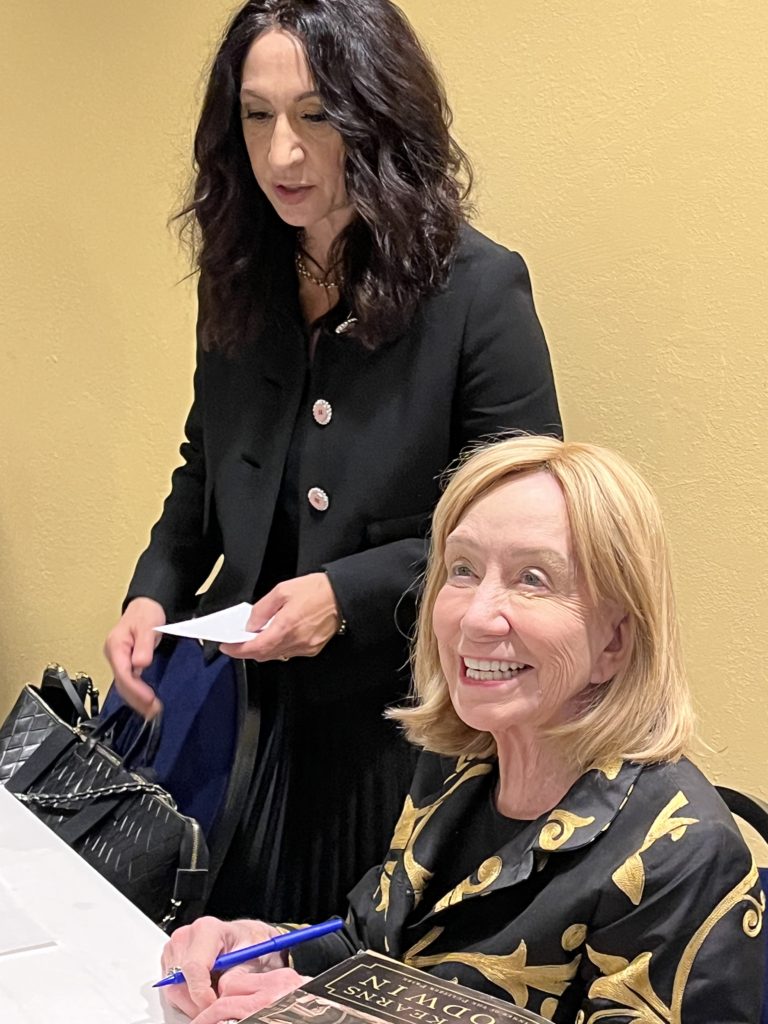
This conference has become my go-to conference each year in November, and 2023 showed why it has succeeded for 28 years. If you’re into Lincoln, this is the place to be in November. I’ve already put the 29th annual symposium on my 2024 calendar.
[All photos by David J. Kent, 2023]

Lincoln: The Fire of Genius: How Abraham Lincoln’s Commitment to Science and Technology Helped Modernize America is available at booksellers nationwide.
Limited signed copies are available via this website. The book also listed on Goodreads, the database where I keep track of my reading. Click on the “Want to Read” button to put it on your reading list. Please leave a review on Goodreads and Amazon if you like the book.
You also follow my author page on Facebook.
David J. Kent is President of the Lincoln Group of DC and the author of Lincoln: The Fire of Genius: How Abraham Lincoln’s Commitment to Science and Technology Helped Modernize America and Lincoln: The Man Who Saved America.
His previous books include Tesla: The Wizard of Electricity and Edison: The Inventor of the Modern World and two specialty e-books: Nikola Tesla: Renewable Energy Ahead of Its Time and Abraham Lincoln and Nikola Tesla: Connected by Fate.



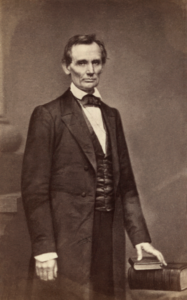 On this date, November 13, 1859, Abraham Lincoln agreed to give a speech at Cooper Union in lower Manhattan in New York City. History suggests this is the speech that made Lincoln president.
On this date, November 13, 1859, Abraham Lincoln agreed to give a speech at Cooper Union in lower Manhattan in New York City. History suggests this is the speech that made Lincoln president.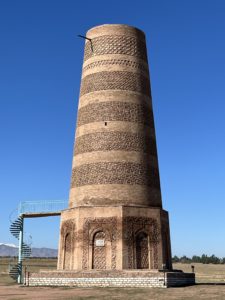 One of the stops on my region tour of several
One of the stops on my region tour of several 


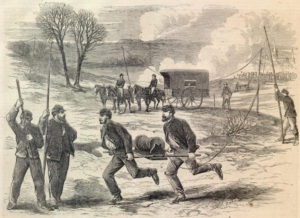 Abraham Lincoln was a big fan of technology and used the telegraph as a war-management tool during the Civil War. The value of the telegraph was reinforced daily. Lincoln received many messages over the new
Abraham Lincoln was a big fan of technology and used the telegraph as a war-management tool during the Civil War. The value of the telegraph was reinforced daily. Lincoln received many messages over the new 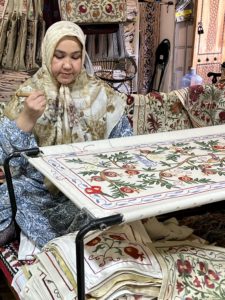 It took two or three days into my visit to Uzbekistan for the subject of the controversial cotton growing industry to come up. We also discussed the silk industry that made the country a key stop in the old Silk Road. Uzbekistan is the largest electricity producer in Central Asia, mainly due to the abundant natural gas reserves and huge Soviet-era power-generation plants. They also are the seventh largest global producer of gold, with copper and uranium not far behind. At first glance (and even second glance), Uzbekistan seems too arid to grow cotton. But cotton production is actually one of most important contributors to the Uzbek economy, accounting for about a fifth of its exports.
It took two or three days into my visit to Uzbekistan for the subject of the controversial cotton growing industry to come up. We also discussed the silk industry that made the country a key stop in the old Silk Road. Uzbekistan is the largest electricity producer in Central Asia, mainly due to the abundant natural gas reserves and huge Soviet-era power-generation plants. They also are the seventh largest global producer of gold, with copper and uranium not far behind. At first glance (and even second glance), Uzbekistan seems too arid to grow cotton. But cotton production is actually one of most important contributors to the Uzbek economy, accounting for about a fifth of its exports.
 Samarkand was one of the stops on my recent travels to Uzbekistan, Tajikistan, Kyrgyzstan, and Kazakhstan. [
Samarkand was one of the stops on my recent travels to Uzbekistan, Tajikistan, Kyrgyzstan, and Kazakhstan. [ On October 4, 1861, Lincoln observed the ascension of a balloon piloted by John LaMountain from General Benjamin Butler’s headquarters at Fort Monroe, Virginia. The balloon passes over Washington and lands 12 miles away in Maryland. While the sanctimonious LaMountain is sometimes accredited with having made the first report of useful intelligence on enemy activity, he was quickly overshadowed by other aeronauts, the Civil War name for balloon pilots.
On October 4, 1861, Lincoln observed the ascension of a balloon piloted by John LaMountain from General Benjamin Butler’s headquarters at Fort Monroe, Virginia. The balloon passes over Washington and lands 12 miles away in Maryland. While the sanctimonious LaMountain is sometimes accredited with having made the first report of useful intelligence on enemy activity, he was quickly overshadowed by other aeronauts, the Civil War name for balloon pilots.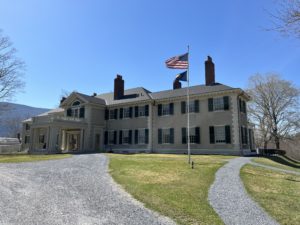 Mary Lincoln hated Washington, especially during the pestilent humidity of the capital city during the heat of summer. It’s the reason President Lincoln moved to the soldier’s home (now President Lincoln’s Cottage) each summer, beginning with 1862 after Willie’s death earlier that year. Mary would take Tad northward, often to New York and into New England, usually to be joined by Robert during his summer break from his studies at Harvard College. In 1863 they traveled to the White Mountains of New Hampshire, then in August of 1864 Robert met his mother and brother in the Green Mountains of Vermont. He intended to return with the president in the summer of 1865, but the assassination kept that from happening. Notwithstanding, the 1864 trip would capture Robert’s fancy enough to return decades later to build his own summer cottage known as Hildene.
Mary Lincoln hated Washington, especially during the pestilent humidity of the capital city during the heat of summer. It’s the reason President Lincoln moved to the soldier’s home (now President Lincoln’s Cottage) each summer, beginning with 1862 after Willie’s death earlier that year. Mary would take Tad northward, often to New York and into New England, usually to be joined by Robert during his summer break from his studies at Harvard College. In 1863 they traveled to the White Mountains of New Hampshire, then in August of 1864 Robert met his mother and brother in the Green Mountains of Vermont. He intended to return with the president in the summer of 1865, but the assassination kept that from happening. Notwithstanding, the 1864 trip would capture Robert’s fancy enough to return decades later to build his own summer cottage known as Hildene.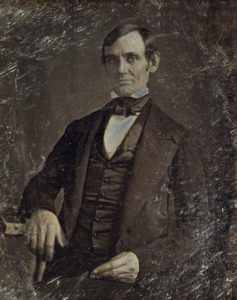 In 1855, the Whig Party had all but fallen apart. Always a Whig in politics, Lincoln was deciding whether to join the new Republican Party. The American Party, called the Know-Nothings because of their habit of denying any knowledge if asked about the party, had also been making inroads with a platform based on bigotry toward foreigners and Catholics (often Irish immigrants). In a letter written August 24, 1855, he tells his longtime friend Joshua Speed that “I am not a Know-Nothing. That is Certain. How could I be? How can anyone who abhors the oppression of negroes, be in favoring of degrading classes of white people?”
In 1855, the Whig Party had all but fallen apart. Always a Whig in politics, Lincoln was deciding whether to join the new Republican Party. The American Party, called the Know-Nothings because of their habit of denying any knowledge if asked about the party, had also been making inroads with a platform based on bigotry toward foreigners and Catholics (often Irish immigrants). In a letter written August 24, 1855, he tells his longtime friend Joshua Speed that “I am not a Know-Nothing. That is Certain. How could I be? How can anyone who abhors the oppression of negroes, be in favoring of degrading classes of white people?”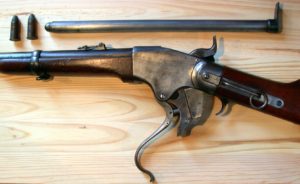 On August 17, 1863, Christopher M. Spencer, inventor of Spencer rifle, presents his new repeating rifle to President Abraham Lincoln and demonstrates how to assemble it. Lincoln was always keen on implementing new military technology during the Civil War, although his generals were not always so eager to follow his lead. Chief of Ordnance James Wolfe Ripley argued that more advanced weaponry was not self-evidently better in the field. Complicated weapons in the hands of untested soldiers and poor weather conditions led to vast inefficiencies in his mind, so Ripley denied the use of some of the new-fangled ideas Lincoln liked.
On August 17, 1863, Christopher M. Spencer, inventor of Spencer rifle, presents his new repeating rifle to President Abraham Lincoln and demonstrates how to assemble it. Lincoln was always keen on implementing new military technology during the Civil War, although his generals were not always so eager to follow his lead. Chief of Ordnance James Wolfe Ripley argued that more advanced weaponry was not self-evidently better in the field. Complicated weapons in the hands of untested soldiers and poor weather conditions led to vast inefficiencies in his mind, so Ripley denied the use of some of the new-fangled ideas Lincoln liked.






